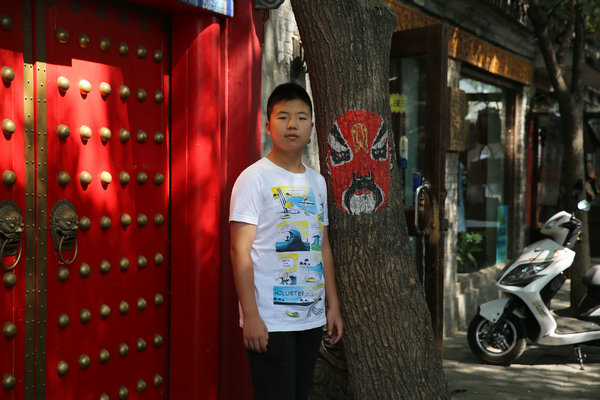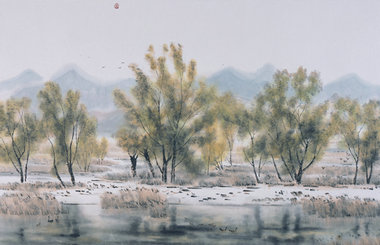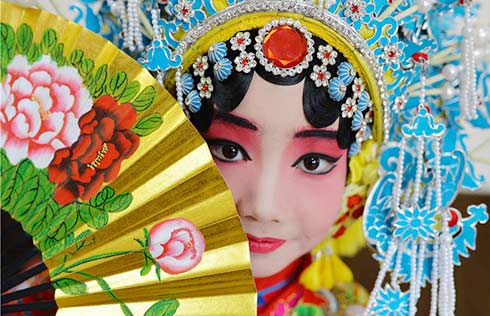A youth's walk down the lanes of history
By Xu Lin ( China Daily ) Updated: 2016-06-04 13:37:07
 |
|
Bai Tianhua has guided about 100 local primary and middle school students to cultural heritage in Nanluoguxiang.[Photo provided to China Daily] |
Bai Tianhua, 15, is a regular visitor to Nanluoguxiang in Beijing. He doesn't pause at the main alley with stores, cafes and restaurants, but turns into one of the 16 narrow hutong on both sides.
In 2015, Bai, now a grade-one senior high school student, started a public service project to teach those younger than him about cultural heritage in Nanluoguxiang. About 100 local primary and middle school students followed him in exploring the capital's history.
"I hope they will have a different perspective of traditional Beijing culture and become interested in it," he says. "They sometimes inspire me through our talks too.
"There are a thousand words for Nanluoguxiang in a thousand people's eyes. Some businesspeople who have seen big changes over the years want to make creative products. For me, the word is hope, hoping the area becomes better. It also means the place gives me hope."
More than 30 ancient residences of well-known people such as the nobility and cabinet ministers before and during the early 20th century are scattered throughout the 16 narrow hutong.
For example, Keyuan Garden owned by Wen Yu, a cabinet minister in the latter part of the Qing Dynasty (1644-1911), is of the style of Suzhou gardens. General Fengshan's Mansion from the same period boasts a well-preserved brick-carved arch with patterns such as plum blossoms.
Only three residences are open to the public: those of the Chinese writer Mao Dun, the painter Qi Baishi and China's last empress Wanrong. Others are mainly state or private properties, vacant or used as multi-household compounds.
Bai often has to stand in the alley and explain the layout of Beijing's traditional courtyards and a pair of stone drums at the gate that represent the owner's social status. Sometimes visitors can enter to look around if the residents agree.
"It's the best way to learn about our traditions," Bai says. "Everything lies before your very eyes."
He believes each residence of a well-known person represents a story that is out of the ordinary and which is imbued with cultural values. He hopes the buildings will be preserved properly and that more will eventually be open to the public, for example with regular open days.
In 2014 he started an investigation on the Nanluoguxiang area as his junior high school graduation project. He searched online and went to the National Library, reading literature and books.
He did a survey among his classmates and found that they are interested in exploring Nanluoguxiang culturally, rather than just eating and taking photos like tourists.
|
|
|
|
|
|
|
|

























 Raymond Zhou:
Raymond Zhou: Pauline D Loh:
Pauline D Loh: Hot Pot
Hot Pot Eco China
Eco China China Dream
China Dream China Face
China Face






